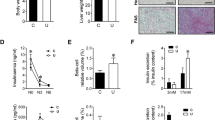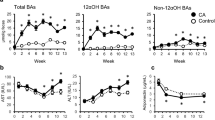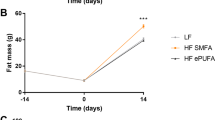Abstract
INTRODUCTION: The clinical management of metabolic syndrome - especially diabetes mellitus type 2 - is notoriously complex due to the progressive nature of this disease. At present, there is a need for a surgical procedure that is effective for the treatment of diabetes mellitus type 2, even in non-obese individuals. The isolated ileal transposition theory could lead to an effective alternative therapy. This intervention has not yet been performed in humans, and there are no reports of its use in an experimental model of diet-induced metabolic syndrome.
OBJECTIVES:
The objective of this study is to evaluate the physiological effects of ileal transposition in rats with diet-induced metabolic syndrome. The effects of this procedure on glucose and lipid metabolism will be assessed.
METHODS:
Forty 12-week-old male rats (albino Rattus norvegicus, Wistar, 2BAW, heterogeneous) will be divided into four groups of 10 animals each: the ileal transposition group (TG) comprising animals on a hypercaloric-hyperlipidic diet; the sham group (SG) containing animals that receive the same diet and undergo the sham surgery; control group 1 (CG1), which will receive a hypercaloric-hyperlipidic diet and will not undergo surgery; and control group 2 (CG2), which will consume standard feed and will not undergo surgery. The surgeries will be performed in 20-week-old animals. Blood samples for laboratory testing will be collected from 12-week-old animals on the day of surgery and after eight postoperative weeks, following determination of the weights of the animals and the administration of anesthesia. The levels of serum glucose, insulin, triglycerides, total cholesterol and fractions, glucagon-like peptide-1, C-peptide and glycated hemoglobin will be assessed in all of the animals. The insulin tolerance test will be performed using PRISMA software, and insulin resistance will be calculated by the HOMA-IR indirect test. On specific days, two 20-week-old rats will be separated and randomly distributed in TG and SG. These animals will be followed until the eighth postoperative week. Subsequently, they will be euthanized, and the retroperitoneal and periepididymal fat deposits will be collected and weighed using a precision scale. In addition, the pancreas, liver and intestinal segments will be sent for pathological and immunohistochemical studies.
Similar content being viewed by others
Article PDF
Author information
Authors and Affiliations
Rights and permissions
About this article
Cite this article
Lourenço, P., Miguel, G., Carlini, M. et al. Organic consequences of ileal transposition in rats with diet-induced obesity. Nat Prec (2011). https://doi.org/10.1038/npre.2011.6122.1
Received:
Accepted:
Published:
DOI: https://doi.org/10.1038/npre.2011.6122.1



